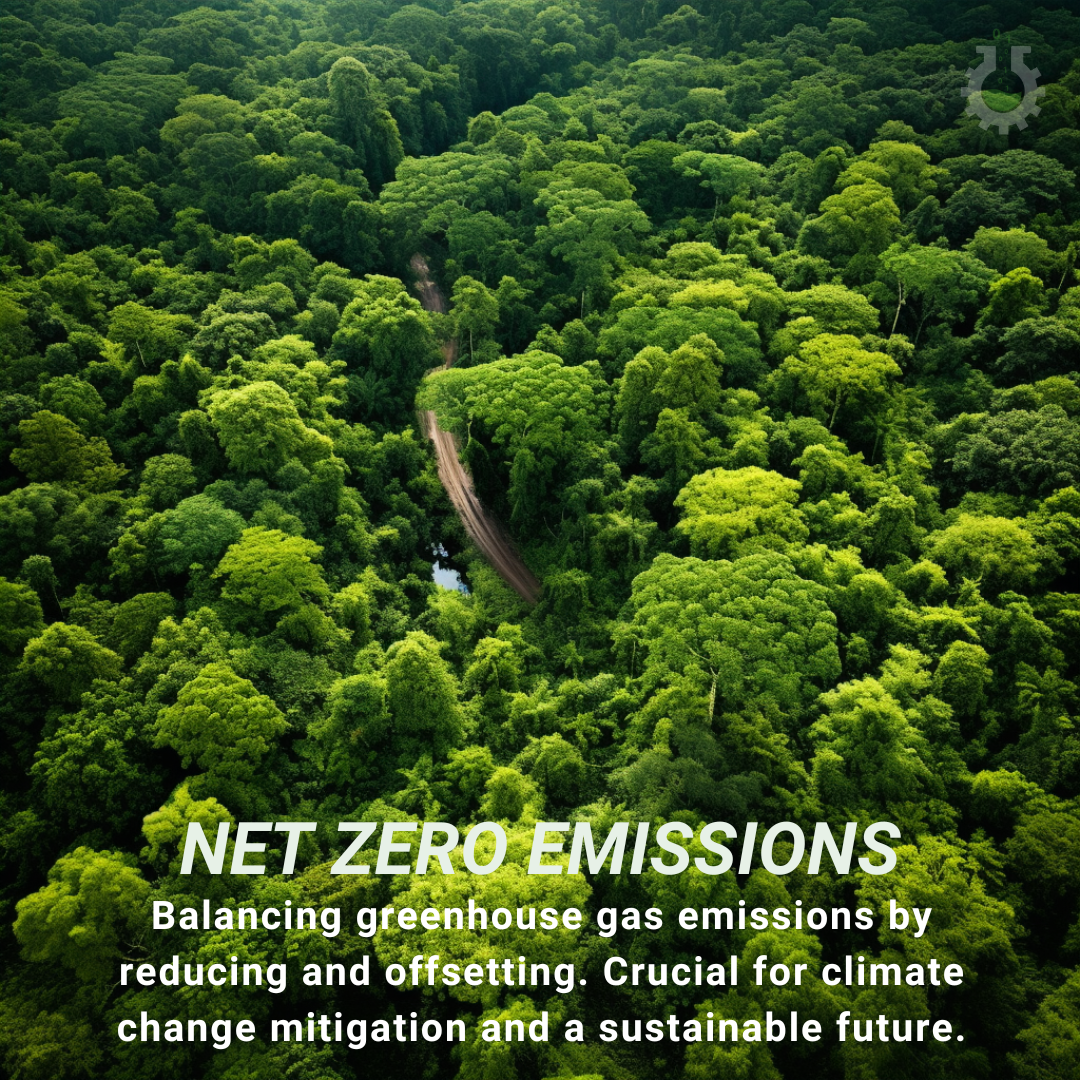November 17, 2023
Climate Change Poster Collection of the Day – Net Zero Emissions
Book a Demo
Today’s Climate Change Poster Collection highlights Net zero emissions. The path to addressing climate change and mitigating its impacts is lined with challenges and opportunities. One of the fundamental steps in this journey is setting net zero targets, a process that requires a comprehensive scope covering all types of greenhouse gases and relevant activities. It is not merely about reducing carbon dioxide emissions, but also about curbing other greenhouse gases like methane and nitrous oxide.
The ideal timeline to achieve net zero is by 2050, a goal that many countries have adopted. However, it’s not just the endgame that matters, but also the journey. Interim targets must be established and immediate action is necessary. Setting a 2050 net zero target without a robust plan for the next decade is akin to signing a blank check.
Offsetting emissions is another crucial factor in the net zero equation. It’s not enough to reduce emissions; we also need to balance out any remaining emissions by absorbing an equivalent amount from the atmosphere. This requires robust standards and a clear approach, including investing in natural solutions like reforestation and technological innovations like carbon capture and storage.
Equity considerations are also essential when setting a net zero target. Different actors, including nations, industries, and companies, have varying capacities and responsibilities. The principle of ‘common but differentiated responsibilities’ underpins the global climate change framework and should be considered.
For instance, Australia’s current goal to reduce domestic emissions by 43 percent on 2005 levels by 2030 is a step in the right direction, but it needs to be significantly strengthened. This target does not align with the Paris Agreement’s goal of limiting global warming to 1.5-2°C, which requires more ambitious climate action.
Australia needs to rapidly reduce carbon pollution, phase out fossil fuels, and transition to renewable energy. The term ‘net zero emissions’ implies a balance between greenhouse gases produced and removed. However, to avoid a climate catastrophe, it’s not just about achieving this balance. Australia needs to phase out all fossil fuels and transition to renewable energy swiftly.
The good news is that Australia can achieve the necessary emissions reductions. Available technology can be utilized to drastically reduce emissions. A firm stop must be put on all gas and coal expansion, and existing use phased out. All fossil fuel use can be replaced with renewable energy. It’s not an easy task, but the path to net zero is clear. The only question is, are we brave enough to take that path and secure a sustainable future for the next generations?
Discover an inspiring collection of climate change poster.



